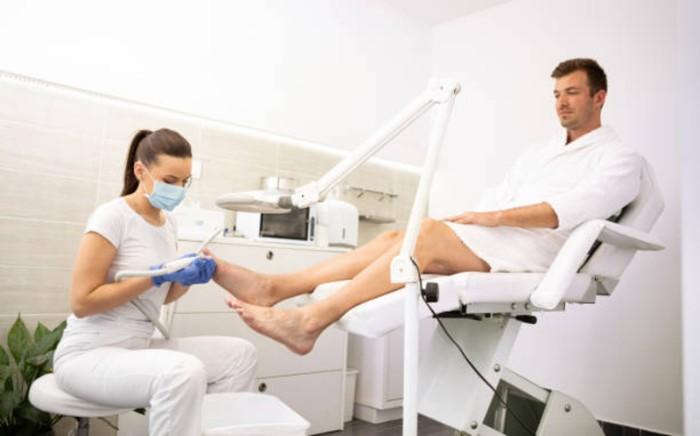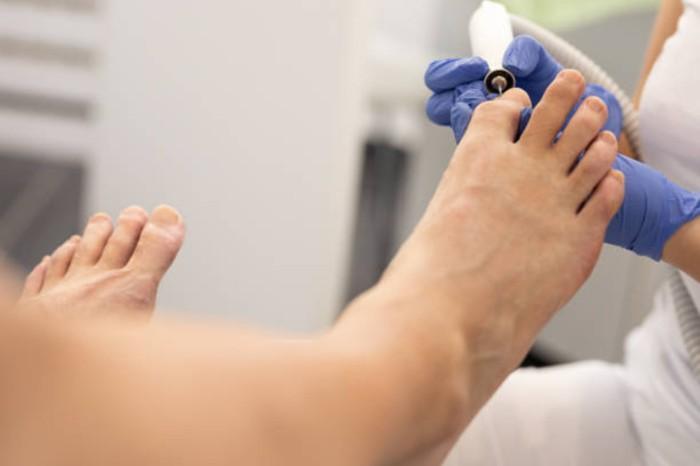Effective Ingrown Toenail Remedies to Reduce Pain and Discomfort.
Jun 11, 2023 By Marie White
Ingrown toenails can be incredibly painful and uncomfortable. Fortunately, there are several remedies that you can use to help treat your ingrown nail and reduce the risk of it happening again in the future. From natural treatments like soaking your feet in Epsom salts or tea tree oil, to more specialized methods such as wearing custom-fitted orthotics, this article will provide you with a range of options so that you can find the best remedy for your needs. So if you're suffering from an ingrown toenail or would just like some tips on how to prevent them from occurring in the first place, read on.
Overview of Ingrown Toenails:
An ingrown toenail occurs when the corner or side of the nail digs into the skin. This can be caused by improper trimming, wearing ill-fitted shoes, and even genetics. Symptoms may include redness, pain, inflammation and swelling around the area of the nail. Untreated cases can lead to infection and other serious complications, so it’s important to seek treatment as soon as possible.
Natural Remedies for Ingrown Toenails:
One natural remedy for treating an ingrown toenail is to soak your feet in Epsom salt. To do this, mix a half cup of the salt with one cup of warm water and soak for 10-15 minutes. You can also apply tea tree oil directly to the affected area and cover it with a bandage. This will help to reduce the inflammation and pain associated with an ingrown toenail. Specialized Remedies for Ingrown Toenails: If none of the above remedies prove effective, you may want to consider a specialized treatment such as wearing custom-fitted orthotics These can be prescribed by a doctor and provide extra cushioning and support to the toes so that pressure is taken off the ingrown nail. some doctors may recommend surgery as a way to permanently remove an ingrown nail.
Professional Treatments for Ingrown Toenails:
If you’re suffering from a particularly severe or recurrent ingrown toenail, it may be to seek professional treatment. Your can evaluate the severity of your and recommend the best course of. This could include an oral or topical antibiotic to treat any infection present as well as surgery to permanently remove the nail.
You can take steps to reducing the risk of ingrown nails and find relief from their painful symptoms. If you’re still suffering after trying the remedies listed here, then it’s important to seek professional medical advice as soon as possible. With the right treatment plan, you can be sure to have healthy, happy toes in no time.
Tips to Prevent Future Ingrown Toenail Occurrences:

In addition to treating existing ingrown nails, it’s important to take steps to prevent them from happening in the future. Here are some tips:
• Trim your nails regularly and make sure they are not too short or too long.
• Wear comfortable shoes that fit properly, without applying excessive pressure on your toes.
• Keep your feet dry and clean, and use talcum powder or foot powder as needed to absorb moisture.
• Wear socks made of breathable fabric to help keep your feet cool and dry.
• Elevate your feet whenever possible to reduce swelling.
How to Know When It's Time to See a Doctor about an Ingrown Toenail?

If you’re experiencing any of the following symptoms, then it may be time to see a doctor:
• Severe pain or swelling that doesn’t go away.
• Redness warmth around the affected area.
• Discharge or pus coming out of the wound.
• Difficulty walking due to the pain.
• Recurrent ingrown nails even after trying home remedies.
It is important to seek medical attention as soon as possible if you think that you may be suffering from an ingrown toenail. Your doctor can help diagnose and treat your condition, ensuring a speedy recovery and preventing any long-term damage or complications. Taking care of your feet is important for your overall health, so don’t hesitate to seek medical help when needed.
Conclusion:
At-home remedies and natural treatments can help relieve pain and discomfort associated with an ingrown toenail, but if these don’t work it’s important to seek professional medical advice. With the right treatment plan, you can be sure to have healthy, happy toes in no time. Taking care of your feet is essential for your overall health, so don’t hesitate to seek medical help when needed. Remember to take preventive measures such as trimming nails regularly and wearing the proper shoes to reduce your risk of future ingrown toenails. With the right care and treatment, you can enjoy feet free from pain and discomfort.
FAQs:
1. How can I tell if my ingrown toenail is infected?
If you have an ingrown toenail that is red, swollen, and painful; accompanied by a discharge of pus or other fluid then it may be infected. It’s important to seek medical attention as soon as possible if you think your ingrown toenail might be infected.
2. What is the best way to treat an ingrown toenail?
The best way to treat an ingrown toenail depends on the severity of your condition. Milder cases can usually be treated with at-home remedies such as soaking your feet in warm water, wearing comfortably-fitting shoes, and gently massaging the area. For more severe cases, your doctor may recommend a course of antibiotics or even surgery to permanently remove the nail.
3. How can I prevent future ingrown toenails?
The best way to prevent future ingrown toenails is by taking preventive measures such as trimming your nails regularly and wearing the proper shoes. Make sure you wear socks made of breathable materials, and elevate your feet whenever possible to reduce swelling. Taking care of your feet is essential for your overall health, so don’t hesitate to seek medical help when needed.







